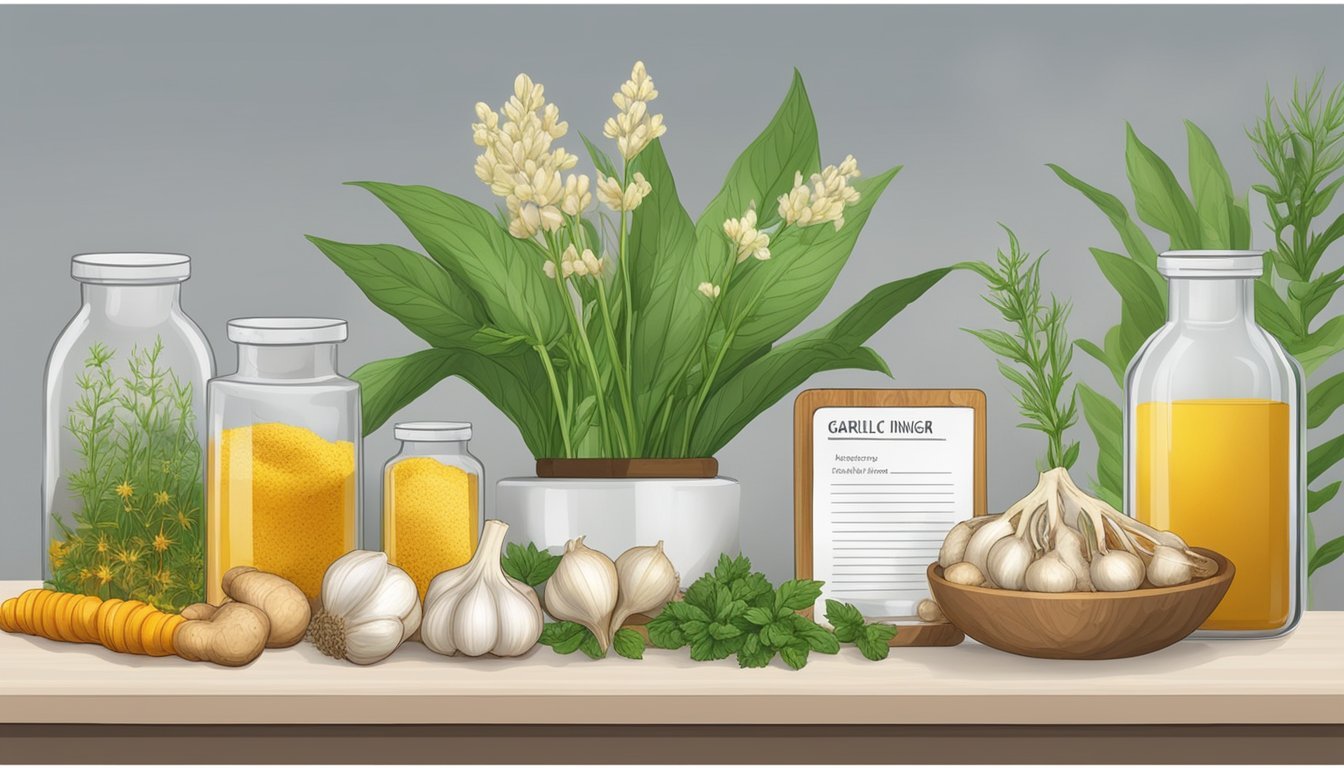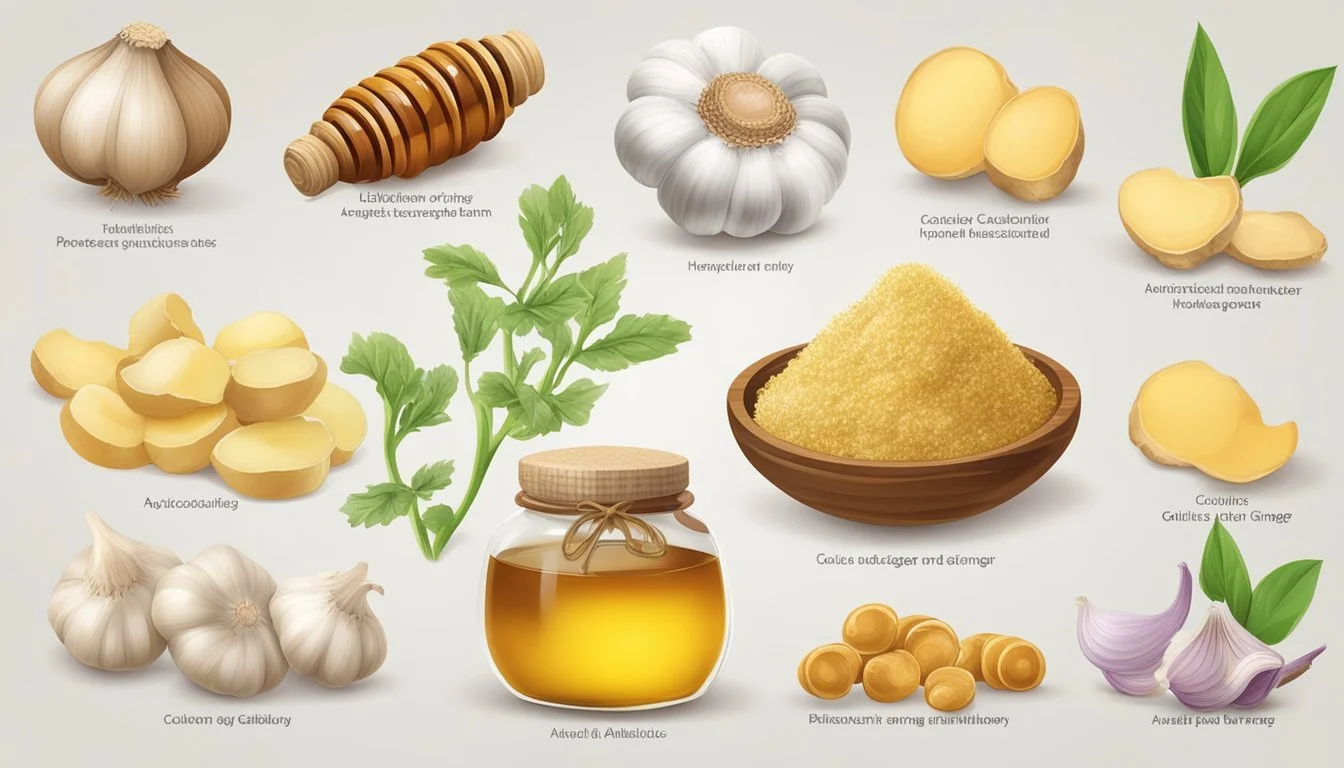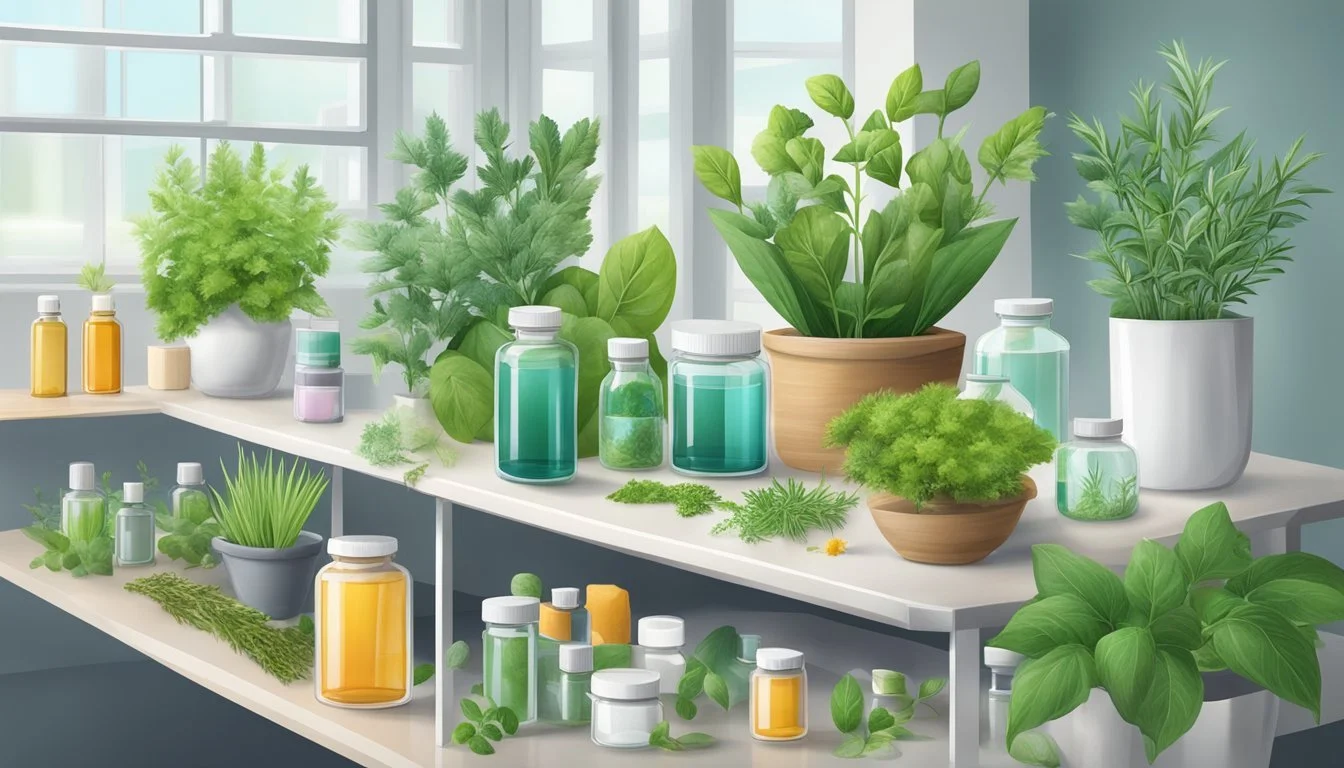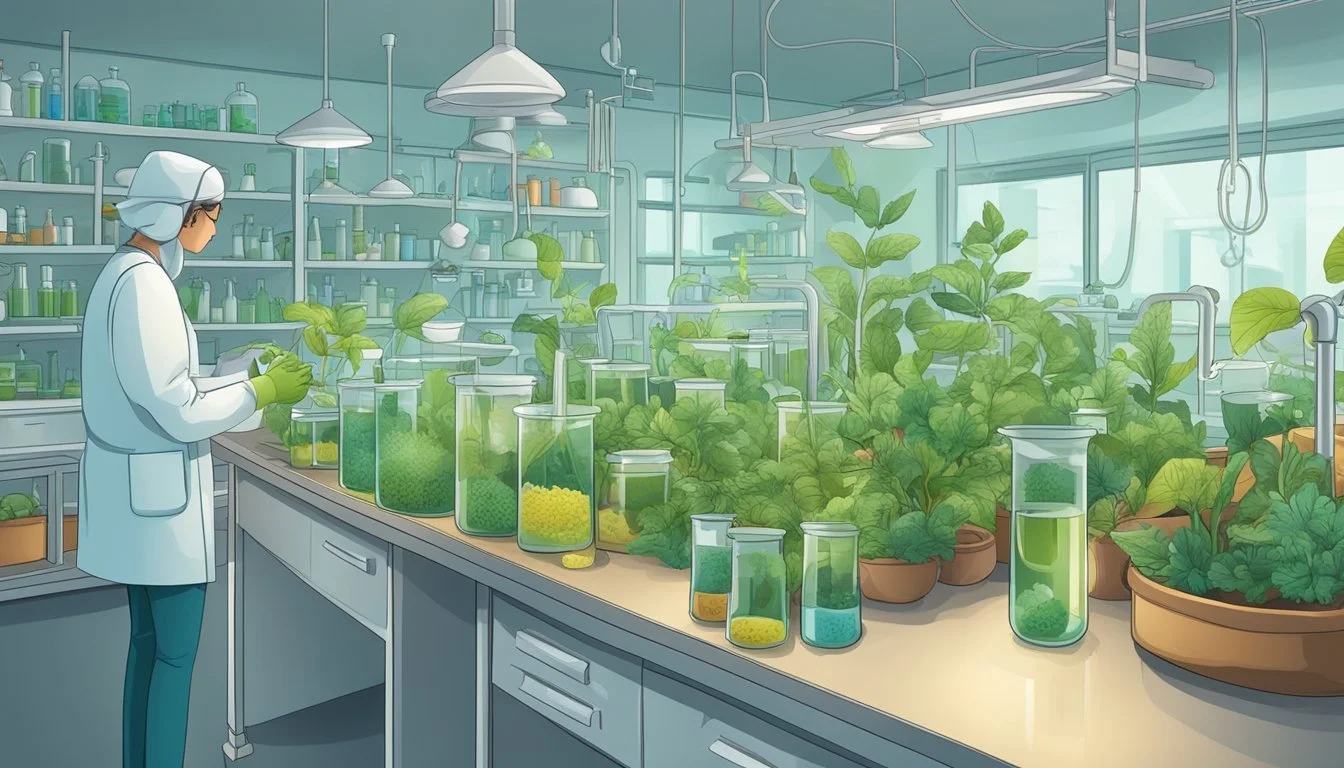The Most Effective Natural Antibiotics and Their Health Benefits
Natural antibiotics have been utilized for thousands of years, harnessing the healing properties of certain plants and substances to combat infections. Before the advent of synthetic antibiotics, ancient civilizations like the Egyptians, Greeks, and Romans used these remedies to treat various ailments. Today, amidst growing concerns of antibiotic resistance, there is a renewed interest in these traditional methods. Honey (how long does honey last?), for instance, has been recognized for its antimicrobial properties and wound-healing activity since ancient times, often used as a protective agent for skin and as a treatment for infections.
Research continues to support the efficacy of many natural substances with antibiotic qualities. Compounds such as allicin, found in garlic, have been used both in traditional and modern medicine due to their ability to fight bacteria, fungi, and viruses. These natural antibiotics offer a dual advantage—they not only provide therapeutic benefits but they also present a lower risk of contributing to the development of resistant strains of bacteria, which is an increasing concern with the overuse and misuse of synthetic antibiotics.
While the potency of natural antibiotics is evident, it is important to approach their use with knowledge and caution. Like their synthetic counterparts, they can interact with other medications and may not be suitable for all types of infections. Thus, individuals should always seek professional medical advice before using natural antibiotics as a treatment. This ensures that the use of these ancient remedies aligns with modern health practices for optimal effectiveness and safety.
Understanding Natural Antibiotics
Natural antibiotics have garnered attention for their potential to combat harmful microorganisms without relying on synthetic drugs. These substances may offer a layer of defense to support the immune system's fight against infections.
Natural antibiotics are compounds derived from natural sources, like plants and minerals, that demonstrate antimicrobial or antibacterial properties. Unlike pharmaceutical antibiotics, they are not synthesized in a laboratory and are considered to have fewer side effects. They play an important role in health by potentially reducing the prevalence and impact of drug-resistant bacteria, a growing concern in modern medicine.
How Natural Antibiotics Work
Natural antibiotics function by disrupting vital processes within bacteria, rendering them ineffective or killing them outright. These substances can take various forms:
Antimicrobial: Target a broad spectrum of pathogens including bacteria, fungi, and viruses.
Antibacterial: Specifically inhibit the growth or kill bacteria.
Their mechanisms may include:
Interfering with bacterial cell wall synthesis.
Disrupting protein production within bacteria.
Modulating the immune system to enhance the body's natural defenses.
Furthermore, some natural antibiotics also possess antioxidant and anti-inflammatory properties, which can help alleviate symptoms and reduce oxidative stress within the body. These additional benefits support the overall health of the individual, potentially preventing a variety of ailments.
Common Natural Antibiotics
In exploring the efficacy of natural antibiotics, it's important to examine the specific properties and compounds responsible for their antimicrobial activity. These naturally occurring substances have been utilized historically across various cultures and continue to be of interest for their health benefits.
Garlic
Garlic contains allicin, a compound with potent antimicrobial properties. It acts as an antioxidant and has been traditionally used to fight bacterial infections and fungal infections.
Honey
Honey is known for its antibacterial properties, mainly due to the presence of hydrogen peroxide and methylglyoxal. Manuka honey, in particular, boasts higher levels of these compounds, contributing to its reputation as a stronger antimicrobial agent that is effective at treating skin infections.
Apple Cider Vinegar
Apple cider vinegar (how long does apple cider vinegar last?) is a useful natural antibacterial and antifungal remedy.
Oregano Oil
Oregano oil is rich in carvacrol and thymol, compounds that contribute to its potent antimicrobial and anti-inflammatory effects. It has been used to treat bacterial infections and is also an antioxidant.
Ginger
Ginger contains bioactive substances like gingerol, which provide antioxidant and anti-inflammatory properties. It has been used as a natural remedy to soothe sore throats, and sinus infections, and relieve nausea from intestinal infections.
Echinacea
Echinacea is widely recognized for its role in supporting the immune system and has been used historically to combat colds and infections. It has antioxidant properties as well.
Goldenseal
Goldenseal contains berberine, an alkaloid that can exhibit antimicrobial activity. This herb is often recommended for its immune-boosting properties and is employed to treat respiratory tract infections.
Clove
Clove oil, high in eugenol, is another antioxidant and antimicrobial agent. It's commonly utilized for its analgesic properties, particularly in dental care.
Coconut Oil
Coconut oil contains lauric acid, which is converted into monolaurin in the body and can demonstrate antibacterial and antiviral activity.
Thyme Essential Oil
With thymol as one of its active constituents, thyme shows strong antimicrobial effects. It is used not only in cooking but also as a remedy for respiratory issues and infections.
Other oils such as oregano essential oil and lavender essential oils may help with sinus infections.
Bacterial Infections and Antibiotic Resistance
Scientific research has demonstrated the potential of certain natural substances to act as effective antibacterials. For instance, a 2022 study published on PubMed highlighted ginger as capable of inhibiting a range of bacteria including Streptococcus mutans, Enterococcus faecalis, and various Staphylococcus species. These studies often involve in vitro assessments where compounds are tested against bacterial cultures to gauge their ability to inhibit bacterial growth.
Medicinal plants have been a focal point of research due to their production of secondary metabolites with antimicrobial function. Studies on plants and plant-based products have been pursued to assess their activity against multi-drug resistant organisms like MRSA (Methicillin-resistant Staphylococcus aureus) and E. coli, which are known for their resilience against many traditional antibiotics.
Natural antibiotic remedies could prove helpful in the fight against superbugs and infectious diseases.
Comparative studies between natural antibiotics and prescription medications are crucial for understanding the utility of natural compounds in clinical settings. The effectiveness of natural antibiotics can vary when compared to prescription drugs, with some natural products showing comparable inhibitory effects on certain bacteria.
However, most natural alternatives have not been subjected to the same rigorous clinical studies as prescription antibiotics.
While some natural substances show promise in vitro, the translation of these effects to real-world, clinical applications remains less certain due to the complexity of bacterial infections in humans and the pharmacodynamics of these natural substances. Evidence on the consistent use and dosage for infections is also less available for natural antibiotics than their prescription counterparts.
Methods of Natural Antibiotic Use and Application
Natural antibiotics have been utilized in healthcare for centuries and can be administered in various forms. They are commonly incorporated into a treatment regimen for infections, with methods tailored to the nature of the ailment.
Natural medications can often be taken orally in the form of capsules or added to food. For instance:
Garlic: Known for its antimicrobial properties, garlic can be ingested directly, used in cooking, or taken as a supplement to help fight bacterial infections.
Honey: Especially Manuka honey, is consumed directly or added to beverages like tea to utilize its antibacterial benefits.
It is important to note that the dose and frequency should align with the guidelines for use, as excess consumption can have adverse effects.
For skin infections or wounds, topical application of a natural antibiotic is a common practice:
Honey: Applied directly to the affected area, honey acts as a barrier to infection and aids in the healing process.
Garlic Concentrate: This can be applied topically to fight fungal infections.
Essential Oil: Diluted with a carrier oil, they're used for their antimicrobial properties. Tea tree oil, and organ oil, for instance, can be applied to prevent infection-causing bacteria from building up. Applying thyme essential oil topically also has a natural antibiotic effect.
Proper application is key, and one must ensure that the natural product is suitable for topical use to avoid skin irritation or allergic reactions.
Potential Side Effects and Risks
When considering natural antibiotics, it is imperative to understand that they, like conventional antibiotics, can come with potential side effects and risks. These may range from mild to severe and can include contraindications, interactions with other medications, and allergic reactions.
Contraindications: Certain natural antibiotics may be contraindicated in individuals with pre-existing conditions. For example:
Those with bleeding disorders should exercise caution when using garlic as it may exacerbate bleeding risks.
Patients taking blood thinners like warfarin should be aware that natural substances with blood-thinning properties, such as ginkgo biloba, could potentially interfere with their medication.
Interactions: Some natural remedies may alter the effectiveness of prescription drugs or affect blood pressure. For instance:
St. John's Wort, an herbal product used for depression, can interfere with the effectiveness of various prescription medications, including blood pressure drugs.
Grapefruit juice has the potential to interact with a variety of medications, including those used for lowering blood pressure, by affecting how they are metabolized in the body.
Natural substances can also provoke allergic reactions, varying from mild to severe. Signs of an allergic reaction may include:
Rashes
Hives
Difficulty breathing
In rare cases, a severe allergic reaction known as anaphylaxis can occur, which is a medical emergency and requires immediate attention.
Individuals must know their allergens and avoid natural antibiotics that may contain these substances.
The use of natural antibiotics is not without risk, and the emergence of drug-resistant bacteria remains a concern as well. Doctors only prescribe antibiotics where necessary to help prevent bacterial infection and viruses from getting stronger and learning how to invade an immune system.
Overuse or improper use of these agents can contribute to this growing problem, just as with pharmaceutical antibiotics. Therefore, individuals should approach the use of natural antibiotics with caution and, whenever possible, under the guidance of a healthcare professional.
Integrating Natural Antibiotics into Healthcare
Natural antibiotics and herbal supplements derived from plants with medicinal properties and other sources are gaining attention as potential complements to prescription antibiotics in healthcare. They may offer additional options for supporting the immune system and managing infections.
Healthcare professionals are increasingly acknowledging the benefits of integrating natural antibiotics into treatment protocols.
These substances, such as honey, garlic, and ginger, possess antibacterial characteristics that can aid in wound healing, bolster immune system function, and play a role in the treatment of urinary tract and respiratory infections. Treatment plans integrating natural antibiotics are crafted with consideration of their interactions with prescription antibiotics to enhance effectiveness and minimize the risk of resistance to antibiotics.
Incorporation Criteria:
Safety Profile: Assess the safety and possible side effects.
Efficacy Evidence: Include substances with scientific backing.
Interaction Check: Ensure compatibility with existing medications.
It is crucial to establish guidelines for the responsible use of natural antibiotics to prevent adverse effects on the digestive system and avoid contributing to antibiotic resistance.
Usage Guidelines:
Dosage Regulation: Adhere to recommended dosages to avoid potential toxicity or reduced efficacy of conventional treatments.
Clinical Supervision: Use under the guidance of a healthcare provider, especially in conjunction with prescription antibiotics.
Monitoring Outcomes: Regularly assess treatment efficacy and adjust as necessary.
By following these protocols, natural antibiotics can be a valuable addition to healthcare, complementing traditional treatments while supporting overall patient health.
The Best Natural Antibiotic Remedies and Recipes
In this section, readers will discover how everyday pantry items can serve as the basis for home remedies and natural antibiotic recipes to address common ailments.
For colds and flu, honey and lemon can be powerful allies. A person can soothe a sore throat with a mixture of honey, which has antibacterial agents, and lemon juice, which is high in vitamin C.
Home Remedy for Sore Throats:
Honey and Lemon Tea: Stir together 1 tablespoon of honey and 2 teaspoons of lemon juice in a cup of warm water. Drink this concoction two to three times a day.
Garlic has been used as a natural remedy for its medicinal properties for centuries and can help combat cold symptoms due to its immune-boosting effects.
Remedy Using Garlic for Colds:
Garlic Tea: Crush 1-2 cloves (how long do cloves last?) of garlic and steep in a cup of boiling water for 5 minutes. Strain and drink once a day.
Natural antibiotic recipes often incorporate spices and herbs known for their health benefits, such as ginger and cinnamon.
Recipe for Ginger Antibiotic Tonic:
Ginger Juice: Juice a 2-inch piece of fresh ginger, mix with honey to taste, dilute in water, and take once daily.
For making a natural antibiotic blend that can be taken at the onset of flu symptoms:
Natural Antibiotic Blend:
Cinnamon and Honey Paste: Mix a half teaspoon of cinnamon with a tablespoon of honey. Take this paste once a day.
Foods such as tea, with its various herbal blends, can provide an additional protective effect against respiratory ailments.
Tea for Urine or Respiratory tract infections:
Echinacea Tea: Brew an Echinacea tea bag as per instructions. Drinking this tea may help boost the immune response during cold and flu season.
Add cranberry for urinary tract infections.
Legal and Regulatory Considerations
When considering the use of natural antibiotics to treat infections, individuals must be aware of the legal and regulatory framework that governs their use. These regulations ensure the safety and efficacy of such products within the healthcare system.
The United States Food and Drug Administration (FDA) does not regulate natural antibiotics in the same manner as it does prescribed antibiotics. Prescribed antibiotics are subject to rigorous testing and approval processes to meet stringent safety and efficacy standards.
Natural alternatives, categorized under dietary supplements, are not required to undergo this process. However, any claims made about their therapeutic benefits are subject to FDA review to ensure they are not misleading.
Quality control and standardization present significant challenges for natural antibiotic products. Unlike prescribed medications that have well-defined and consistent active ingredients, natural products can vary widely.
Regulations on the quality and standardization of these substances are critical. Products must at least adhere to the Current Good Manufacturing Practice regulations (CGMPs), enforced by the FDA, which are designed to ensure that products are produced consistently and up to the quality standards appropriate for their intended use.
Future of Natural Antibiotics
The continued emergence of drug-resistant bacteria propels the need for research in natural antibiotics and their innovative applications. Efforts are aimed at fortifying healthcare by integrating novel discoveries to treat infections with traditional treatments.
Researchers are relentlessly working to unveil new compounds from natural sources that show promise in combating pathogenic bacteria. This quest has been invigorated by the alarming increase in drug-resistant bacteria, which challenge the efficacy of conventional medication. Recent trends indicate a focus on plant-based compounds, as well as an intensification in the study of microbial natural products which have historically been a rich source of antibiotic lead compounds.
Notable Research Achievements:
Identification of bioactive compounds in plants and microorganisms.
Development of high-throughput screening methods for rapid testing.
Enhanced genetic sequencing techniques to analyze microbial genomes.
Applications of natural antibiotics are not limited to direct use as medication but extend to adjunctive therapy, which could augment the effectiveness of synthetic antibiotics and boost the immune system's response.
Key Innovative Uses:
Topical formulations, such as honey-infused bandages, make use of their antimicrobial properties to aid wound healing and prevent bacterial infection.
Combination therapies where natural antibiotics are used in concert with synthetic ones to reduce the likelihood of resistance development.
Preventative measures in healthcare settings, integrating natural antimicrobials in sanitation protocols.
The integration of natural antibiotics presents an exciting forefront in the fight against bacteria that have developed resistance to traditional medications. Research and applications continue to evolve, promising a healthier future relying on nature's arsenal against infection.
Natural antibiotics serve as supplementary options for individuals aiming to support their immune systems and manage bacterial infections.
Individuals considering natural antibiotics should consult healthcare professionals to ensure proper use and to avoid adverse interactions with other medications. While these natural agents can aid in fighting bacteria, they should not be viewed as replacements for professional medical treatment when it is warranted. The integration of natural antibiotics into healthcare regimens requires a balanced and informed approach.








